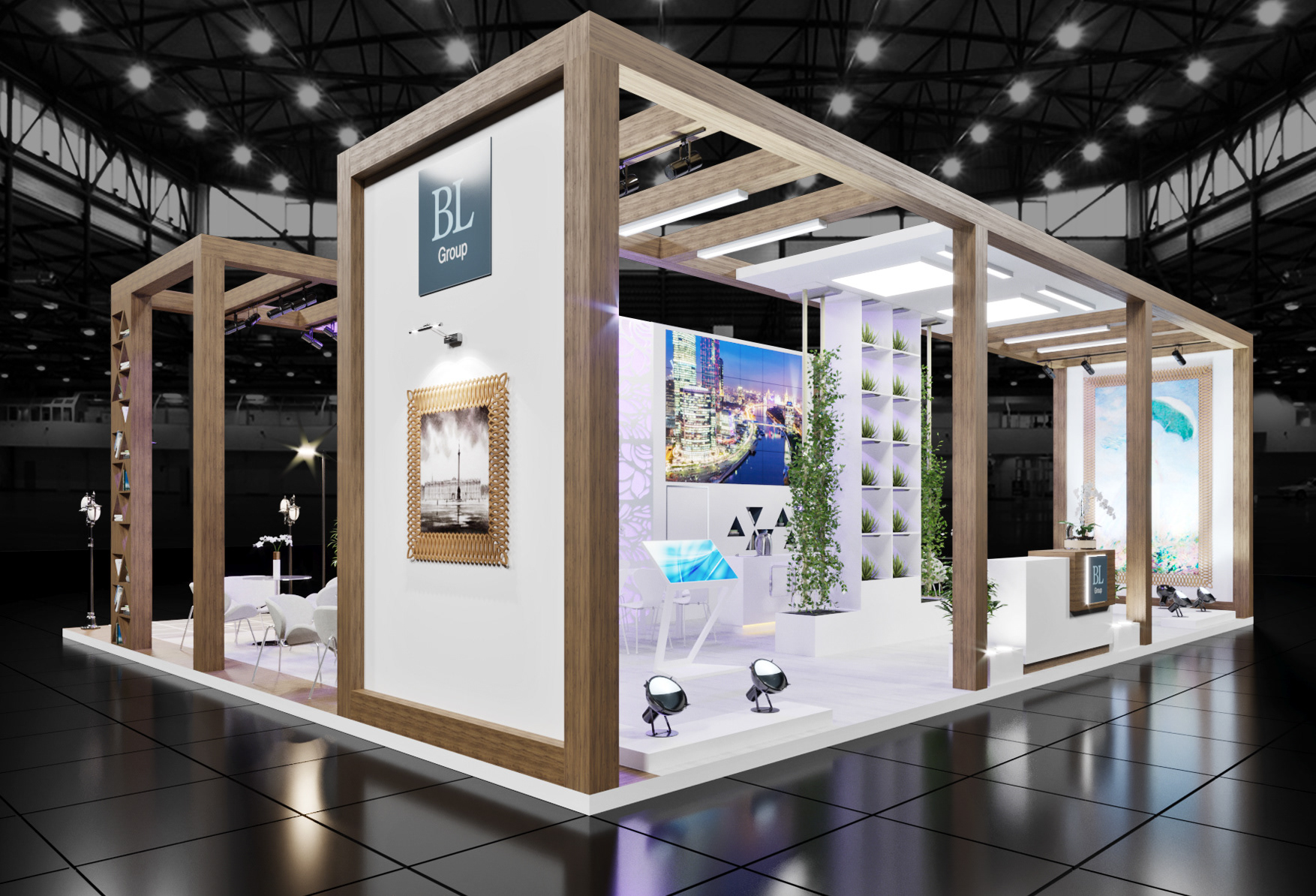Top Exhibition Stand Design Trends for 2024-2025
The exhibition stand design landscape constantly evolves, with businesses seeking new ways to captivate audiences and leave lasting impressions. As technology advances and sustainability becomes more crucial, exhibitors focus on creativity, experience, and environmental responsibility. Here are the top exhibition design trends shaping 2024 and 2025, helping brands stand out and make a memorable impact at trade shows.
Sustainable and Eco-Friendly Designs
As environmental consciousness grows, sustainability is no longer optional—it’s essential. Today, brands are increasingly committed to minimizing their environmental impact, and exhibition stands are a prime area for showcasing this value.
Reusable and Modular Stands: Modular stands have gained popularity due to their flexibility and reusability. Components are built to be disassembled and reconfigured for multiple events, reducing waste.
Sustainable Materials: Exhibitors opt for eco-friendly materials like recycled aluminium, bamboo, and biodegradable plastics. Many are also using sustainably sourced wood and fabric options.
Low-Energy Lighting: LED lighting consumes less power and is versatile. It can create stunning effects while saving energy.
Experiential Design and Immersive Elements
Creating a memorable experience is at the heart of effective exhibition stand design. In 2024-2025, exhibitors will focus on immersive experiences to engage attendees on a deeper level.
Virtual Reality (VR) and Augmented Reality (AR): VR and AR offer exciting opportunities to engage visitors with product demonstrations or virtual tours that aren’t constrained by the physical space of the stand. For example, VR headsets can transport visitors into a brand’s universe, while AR can add interactive layers to products on display.
Multi-Sensory Experiences: Brands can create a lasting impact by engaging multiple senses. Adding sounds, scents, and even tactile materials to a stand can create an immersive experience that resonates with visitors.
Interactive Touchpoints: Touchscreens, quizzes, and interactive games allow for direct engagement with products and services, adding an interactive element that holds visitor attention longer.
Personalized and Data-Driven Designs
The trend towards personalized experiences in retail and digital marketing is also influencing exhibition design. Stands are being tailored to target audiences more accurately, enhancing engagement and conversion rates.
Data-Driven Insights: Many exhibitors now use data from previous events, online engagement, and market trends to design stands that align with specific visitor preferences. Knowing the age demographic or industry interests of attendees helps exhibitors personalize both the design and the experience.
Customizable Spaces: Modular designs are being adapted to create spaces that can change depending on visitor interactions or times of the day. For instance, brands might include private zones for personalized demos or change display colours based on visitor demographics.
QR Codes and On-Demand Content: By incorporating QR codes that link to personalized content, brands allow visitors to access specific information on-demand, making the experience more engaging and relevant.
Minimalist Aesthetics with Bold Branding
Minimalism has continued to be a popular trend in exhibition design. It allows for a sleek, professional look that emphasizes brand identity and core messaging.
Simplified Layouts: With clear lines, open spaces, and minimal clutter, minimalist designs are highly effective at drawing attention to key messages and product displays. Visitors are more likely to engage when the layout feels spacious and visually appealing.
Statement Graphics and Typography: To make an impact, brands use large, bold graphics or oversized typography that communicates brand values at a glance. High-quality visuals and concise messaging create a memorable experience without overwhelming the visitor.
Neutral Palettes with Brand Colors: A neutral colour scheme paired with bold brand colours helps ensure the brand identity remains strong without the design feeling overly busy or distracting.
Technology-Infused Stands
Technology is playing an increasingly critical role in exhibition stand design. Smart technology enables brands to create more engaging, memorable, and convenient experiences for attendees.
Digital Screens and Live Feeds: Large LED screens displaying live feeds, product information, or interactive content effectively capture attention from a distance. Some brands are also using live social media feeds to show real-time engagement.
AI-Powered Engagement Tools: Artificial Intelligence tools, such as chatbots or facial recognition, can help personalize the visitor experience. AI-powered screens, for example, can adjust content based on the age or gender of the person standing nearby.
Contactless Interactions: In response to a more health-conscious world, many stands are incorporating contactless technology such as QR codes and NFC tags, allowing visitors to access information or join mailing lists without physical contact.
Focus on Comfort and Well-Being
As trade shows are often long, exhibitors focus on creating comfortable, inviting spaces where visitors can relax and recharge.
Lounge Areas and Meeting Spaces: Comfortable seating areas are becoming more common, allowing visitors to take a break or discuss business in a relaxed setting. This added comfort can create a more positive impression and give visitors a reason to linger.
Biophilic Design: Biophilic design brings elements of nature indoors to help create a calming atmosphere. This trend includes using live plants, water features, and natural textures like wood and stone.
Quiet Zones: In busy trade shows, quiet zones provide a place to escape the noise. These can be useful for more in-depth conversations or simply allow attendees to recharge before re-engaging with other booths.
Hybrid Physical-Digital Experiences
With digital integration becoming essential, hybrid experiences are bridging the gap between physical and online interactions, enhancing accessibility and engagement.
Virtual Access and Livestreaming: Many brands are now live-streaming parts of their booth experience, allowing online audiences to participate virtually. This approach expands the reach and allows for engagement beyond the physical location.
Digital Swag and Gamification: Offering downloadable content or gamified experiences, such as virtual spin-the-wheel prizes, can provide value to both physical and virtual attendees, ensuring that both groups are engaged.














Post Comment